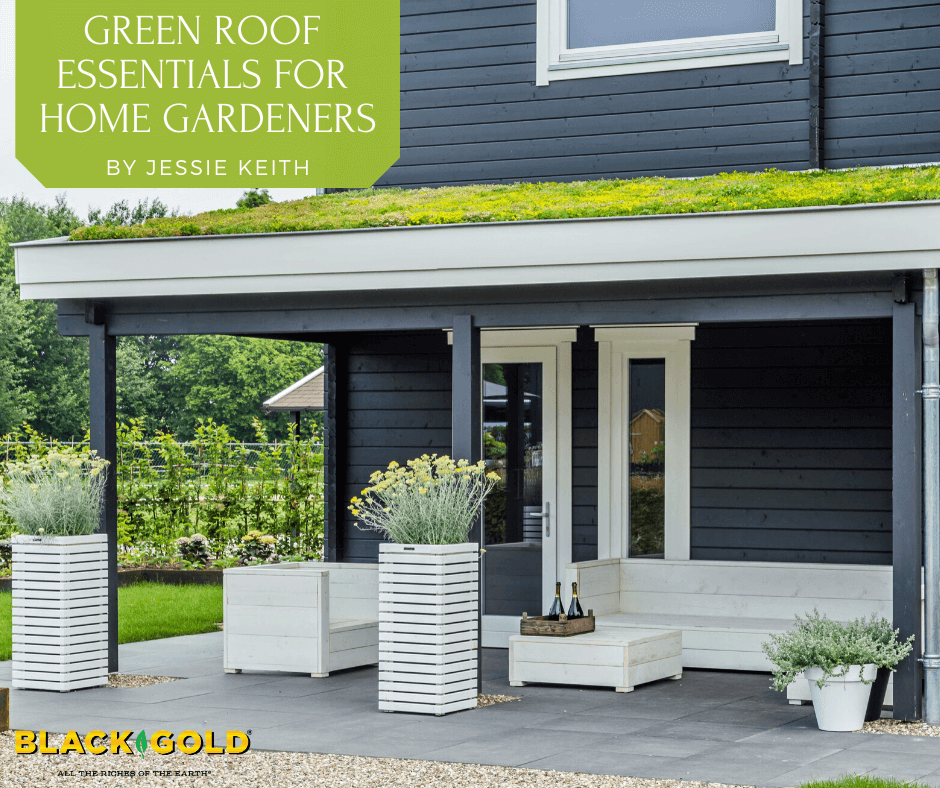
“A roof of asphalt shingles is a desert wasteland compared to a living, cooling, vital green roof.” -Jessie Keith
Even small-scale green roofs need specialized knowledge for success. You can’t just throw potting mix on top of your garden shed, patio roof, or chicken coop, plant a few succulents, and call it a green roof. Do it slap-dash, and you’ll get a big mess. Start outright, and you’ll have a lovely longterm addition to your garden or home. Here are some essentials to consider when designing and creating a small-scale green roof.
Green Roof Benefits

Well-crafted green roofs benefit buildings and the environment. They cool structures in the summer, hold heat in winter and reduce noise in homes. They benefit the environment by reducing stormwater runoff, increasing habitat and food for wildlife, and providing green space to reduce carbon emissions. On a larger scale, green roofs in cities reduce the urban heat island effect (increased temperatures caused by widespread heat-absorbing asphalt and roofs and too little plant life to reduce heat). According to the EPA, “Air temperatures in cities, particularly after sunset, can be as much as 22°F (12°C) warmer than the air in neighboring, less developed regions.” Green roofs are also perfect for those of us that have a little hobbit in our veins and simply love plants and green spaces.
Their real-world benefits are measurable. Cities invested in green-roof technology see positive impacts fast. According to the non-profit Green Roofs for Healthy Cities (GRFHC), “In 2019, 14 green roof companies recorded 763 projects in 35 US states and three Canadian Provinces, installing 3,112,818 square feet of green roofing.” The 3,112,818 square feet provided the following measurable gains:
- 36.9 million gallons of stormwater retained per year;
- 120 tons of carbon sequestered every two years;
- 5.06 million kWh (equivalent) of energy saved per year;
- 1,199 full-time equivalent (FTE) construction jobs;
- 45 full-time equivalent (FTE) maintenance jobs annually.
Even small green roofs can make a difference to homeowners and the local wildlife. A roof of asphalt shingles is a desert wasteland compared to a living, cooling, vital green roof.
Green Roof Types
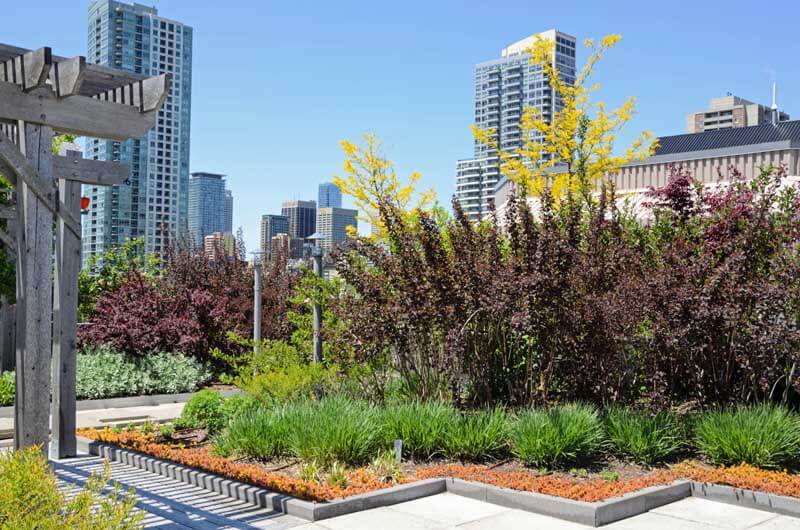
There are two basic green roof types (with many variations in between), extensive and intensive. Extensive types are shallow (4-6 inches of soil), lighter, lower-care green roofs planted with tough, hardy succulents. Sometimes they are even planted as small grasslands. Intensive green roofs are deeper (6+ inches of soil), heavier, and higher maintenance. These are found on large urban apartment or corporate buildings with built-in green roof gardens or even farms.
Homes able to accommodate intensive green roofs are specially built to sustain them. Even those with extensive green roofs are bolstered to handle the extra weight. Extensive green roofs on architecturally simple yard or garden structures are less of a worry.
Extensive Green Roof Layers

-
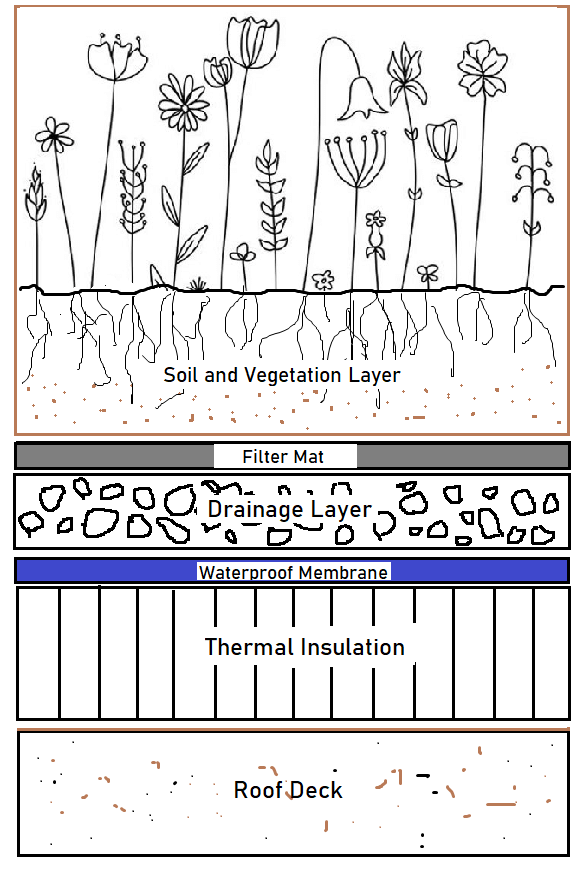
Adapted from Small Green Roofs. Vegetation Layer: Low-growing, low-water plants are best.
- Soil Layer: The “soil” layer consists of a soilless growing medium that requires replenishment over the years. It often contains various mineral components, such as pumice and perlite, and organic components, such as coconut coir and Canadian Sphagnum peat moss. In some European countries, they use ground soil because its mineral content does not break down.
- Filter Mat: This is a thin, geotextile layer with fine pores that keep particles out of the drainage layer while allowing water through. (Heavyweight landscape fabric works well.)
- Drainage Layer: Lightweight small or medium lava rock (scoria) stones, expanded clay, or shale are common drainage-layer minerals that will not degrade. (Small lava rock is a good choice.)
- Waterproof Membrane: Choose synthetic waterproof sheeting made for green roofs. It is specially designed to resist weathering and cracking. (Deck waterproofing membrane is a good option for small-scale projects.)
- Thermal Insulation: A commercial insulation layer is required for heated buildings but not needed for small-scale, outdoor green roofs.
- Roof Deck: The roof base-layer is generally wood.
- Edging: A long-lasting edge must be applied to keep all layers in place while also permitting drainage. Pebbles are usually placed along the edge to allow water to filter to a downspout. Good drainage is essential to avoid washout or other problems. (Wood edges can be used, or metal edge restraints can be specially purchased.)
Some of these layers can be bypassed with the use of modular green roof trays designed on plastic bases made to sit and fit on a waterproofed roof deck. These are generally only accessible to professionals, so home gardeners would need to work through a contractor to get them.
Extensive Green Roof Essentials
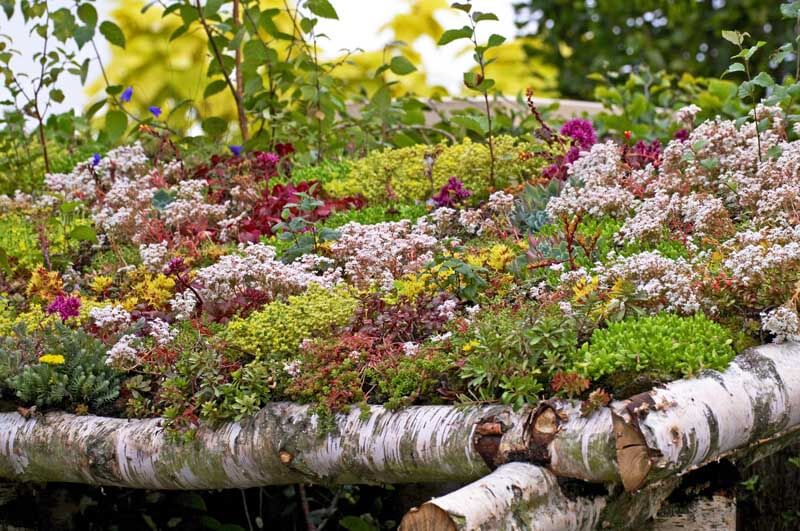
Small-scale green roofs may be tiny enough to cover a doghouse, such as Schicketanz’s beautifully designed prefab doggy dream house, or can bedeck larger garden structures, such as a pavilion or succulent covered patio roof. (A knowledgeable contractor is needed for bigger projects.) Here are essentials to consider when planning any green roof project.
- Design for Maintainance – Easy access is essential for future maintenance. Consider how you plan to weed and modify plantings on your roof. Irrigation may also be needed during very hot, droughty times. On larger, flat roofs, maintenance walkways of stone increase accessibility. Laying down irrigation tape that is easily hooked up to the hose makes watering easy.
- Determine Structural Load-Bearing Capacity – According to the National Park Service: “When fully saturated and with mature plant cover, a thin extensive green roof can weigh about 13 pounds per square foot. A more typical extensive roof with 3 to 4 inches of growing medium weighs 17 to 18 pounds per square foot.” Some sources calculate higher weights. Then you need to consider load. For instance, if your green roof load was 20.5 lb./sq.ft. over the span of 8.5 ft., the roof would need 6 x 2″ timbers spaced 16″ apart for a strong enough platform (numbers from the sadly-out-of-print Small Green Roofs: Low-Tech Options for Greener Living (2011) by Nigel Dunnett et al.)
- Budget – Costs generally range from $13 to $45 per square foot, installed by a professional. If you build a smaller outdoor green roof on your own, the cost can be much less.
- Plants and Soil Depth – Succulents can be purchased by the flat, which is the most cost-effective way to start. Most will grow beautifully in 4-6 inches of growing medium.
Extensive Green Roof Plants
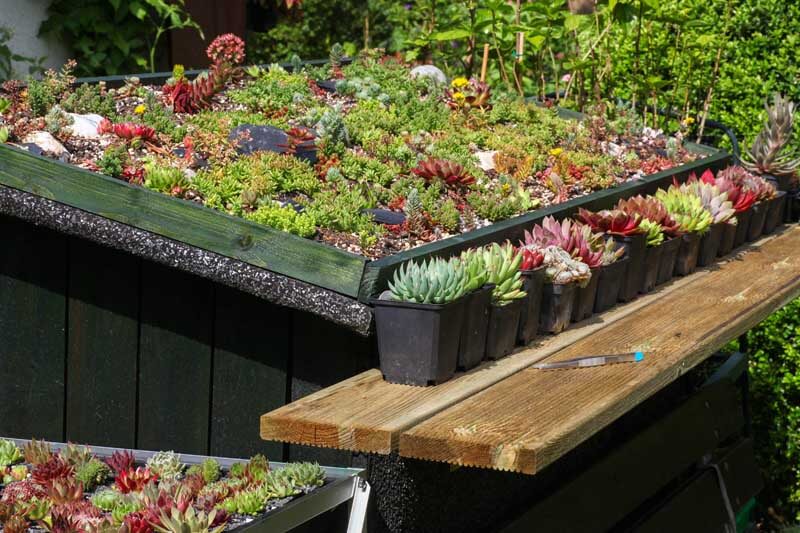
Hardy, evergreen, low-growing succulents are the best for extensive green roofs. Choose those that spread and have different colors and textures that pop.
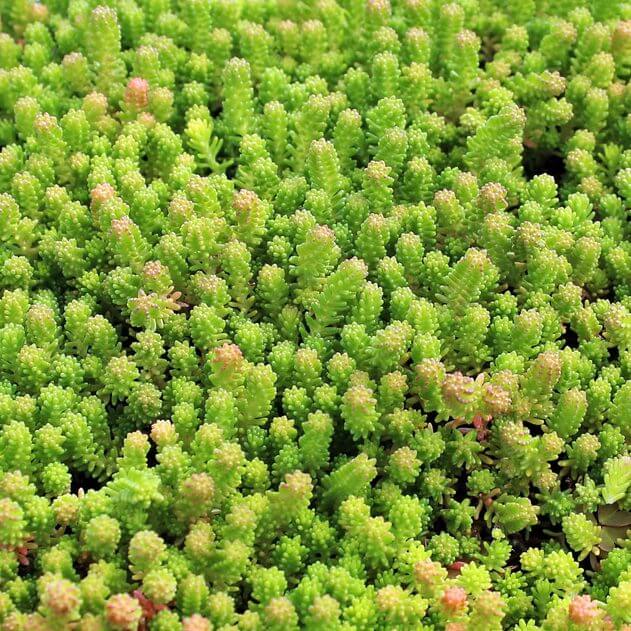
Coral Carpet Sedum (Sedum album ‘Coral Carpet’, USDA Hardiness Zones 6-9) – The white-flowered sedum reaches 4 inches high, spreads to 8 inches, and has greenish-red foliage that turns dark coral in winter.
Angelina Stonecrop (Sedum rupestre ‘Angelina’, Zones 3-11) – The golden spruce-like foliage turns shades of orange in winter, and plants reach 3-6 inches and spread to 12 inches.
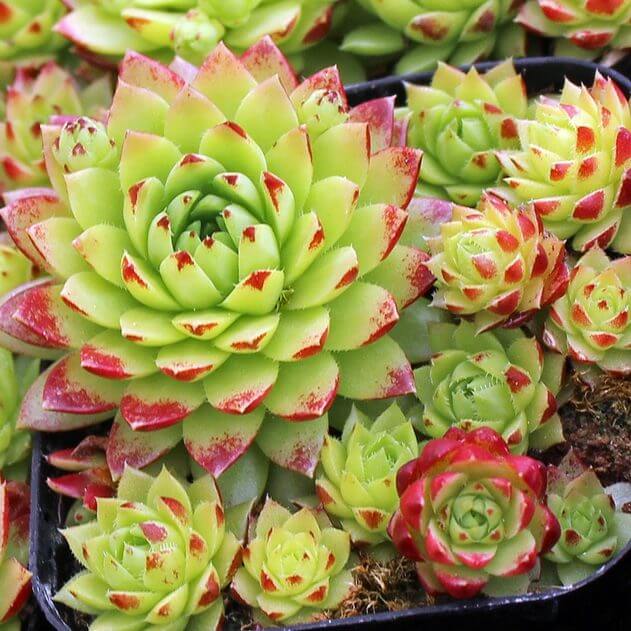
Kelp Forest Stonecrop (Sedum ‘Kelp Forest’, Zones 4-9) – Soft mounds of sprucy leaves can reach 6 inches and spread to 18 inches.
Tasteless Stonecrop (Sedum sexangulare, Zones 5-8) – Is more tasteful than its name suggests. The fine, low-growing evergreen spreads quickly to form an attractive mat of fine foliage. Starry yellow flowers appear in late spring or early summer.
Rolling Hens-and-Chicks (Sempervivum globiferum ssp. allionii, Zone 5-9) – Rolling Sempervivums create lots of offsets and spread. Electric green rosettes that develop red-flushed tips in winter make this variety extra pretty.
Histoni Rolling Hens-and-Chicks (Sempervivum globiferum ssp. hirtum ‘Histoni’, Zone 5-9) – Bright green rosettes tipped in cherry red give this rolling hens-and-chicks bright color that deepen in the winter.


